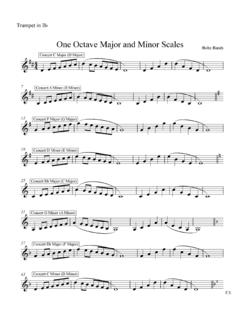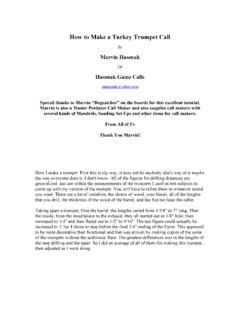Transcription of trumpet - lutherhigh.org
1 trumpet The trumpet plays high brassy notes. The trumpet is the highest sounding member of the brass family. The brilliant tone of the trumpet travels through about 6 - feet of tubing bent into an oblong shape. A trumpet player can change pitches changing the position of his lips on the mouthpiece or pushing down one or more or the valves. When he pushes down on the valves the part of the tubing that is sounding is made longer so the pitch changes. Long ago trumpets and cornets were used during battles. Kings like trumpets to play at their royal celebrations because they sound so important and special. During Bach s time, trumpets were 7 or 8 feet long. They didn t have any valves, so the only way to change notes was by tightening or relaxing the lips.
2 Valves were added in 1820 and the length of the trumpet was shortened to about 4 feet. trumpet Links How the sound is made Sound on a brass instrument comes from a vibrating column of air inside the instrument. The player makes this column of air vibrate by buzzing the lips while blowing air through a cup or funnel shaped mouthpiece. To produce higher or lower pitches, the player adjusts the opening between his/her lips. The mouthpiece connects to a length of brass tubing ending in a bell. The shorter the tubing length, the smaller the instrument, and the higher the sound; and the longer the tubing length, the larger the instrument, and the lower the sound. How the pitch is changed The pitch of a brass instrument depends on the volume of air that is vibrating, as well as the speed at which the player's lips vibrate.
3 The volume of air depends on the length of the tube; a longer tube means a larger volume of air, hence lower pitch. By buzzing the lips faster or slower, the player can cause the air in the tube to resonate at different harmonics. In order to get all 12 notes of the chromatic scale, the player needs to change the length of the tube by moving a slide or by pressing valves.






